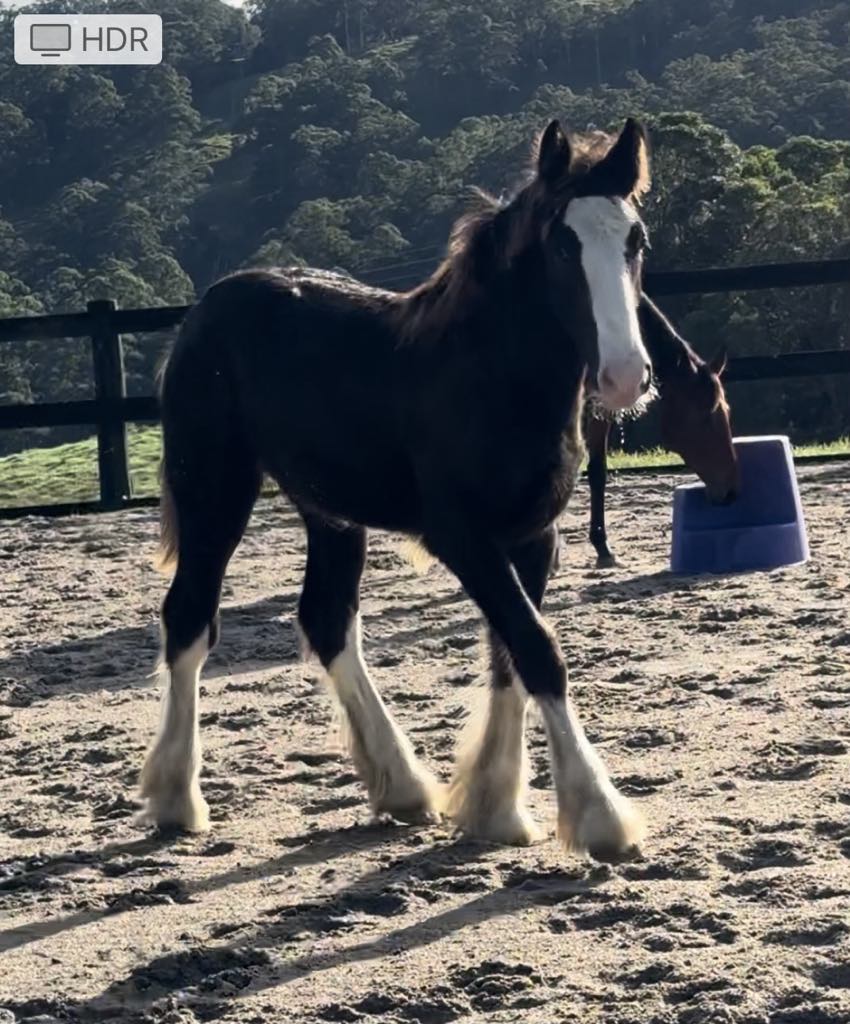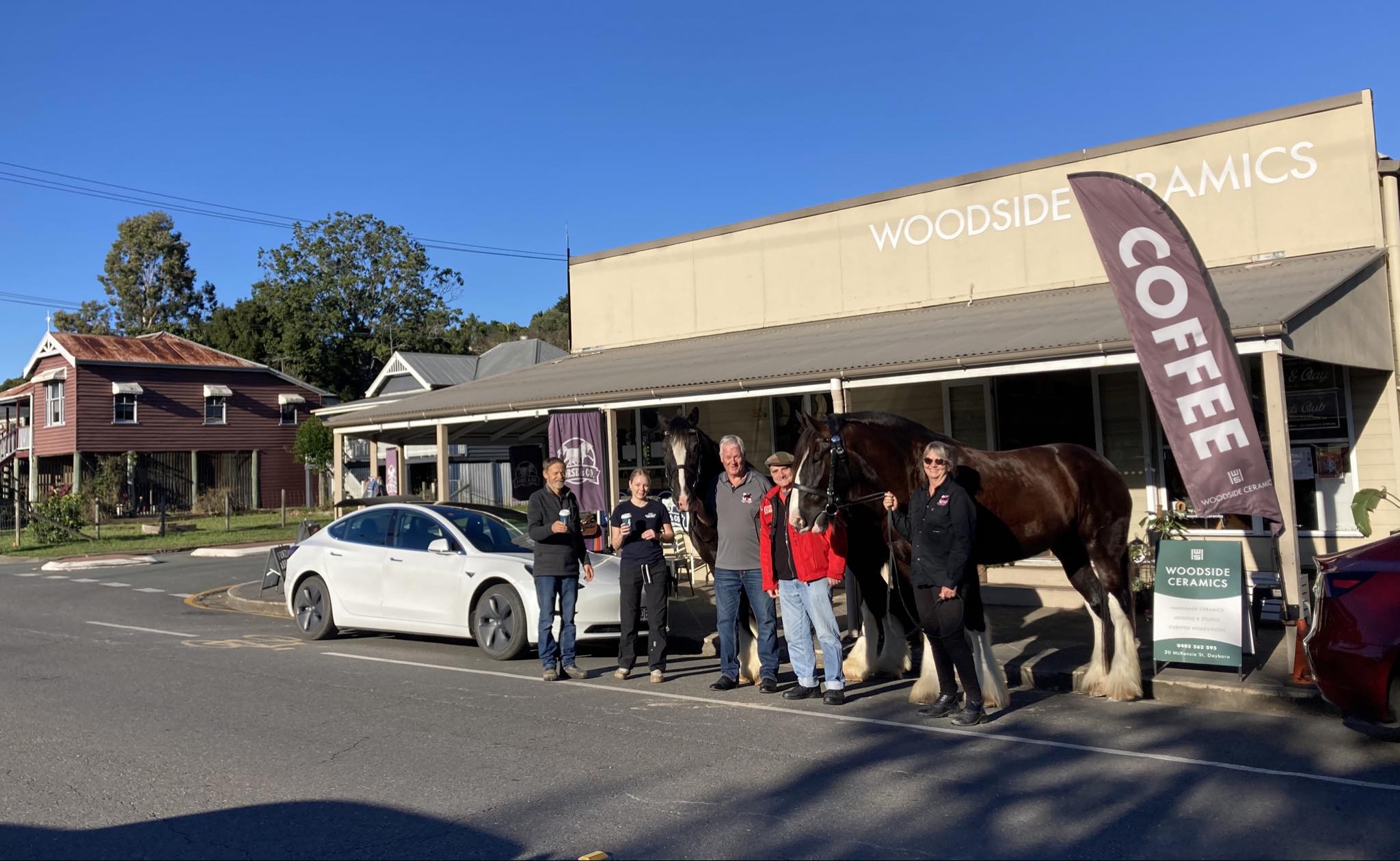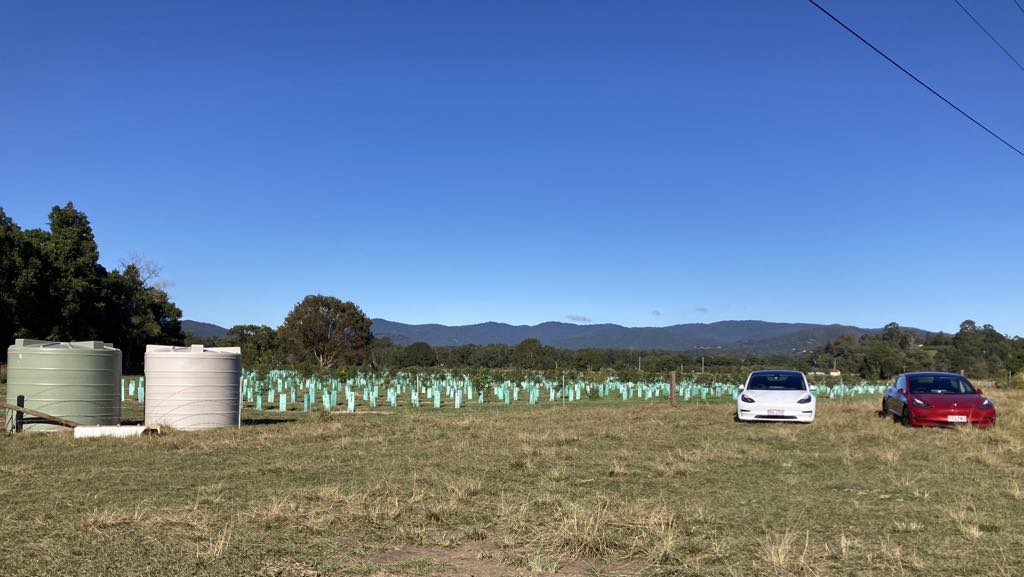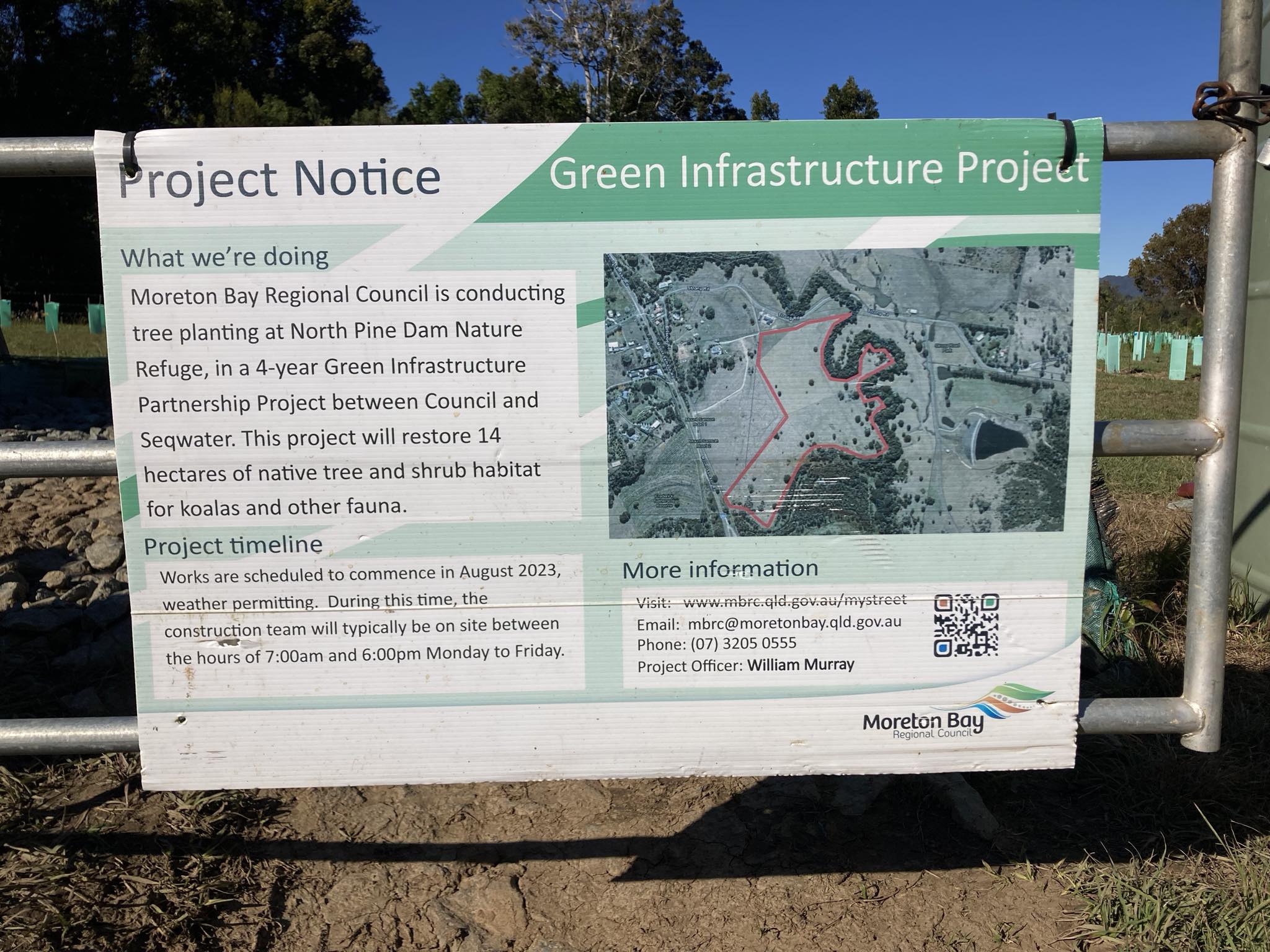Sign up for daily news updates from CleanTechnica on email. Or follow us on Google News!
Not only can individuals fight climate change by their actions, so can communities, councils, and states. One such community is the semi-rural town of Dayboro situated about one hour north of Brisbane in Queensland, Australia. Here in the idyllic surroundings (and busy coffee shops), we met with Brian Porter to talk about what the Dayboro community is doing to create a better future.

Brian is a frequent attendee of the Brisbane Northside Coffee, Cake and EVs discussion group that has been meeting at the local tavern for the past 3 years. He organised this meetup, including two giant Shire horses, to draw attention to what his community is doing to combat climate change. The sight of the two huge Shire horses posing between two Tesla Model 3s in Dayboro’s main street drew quite a lot of attention. As you would expect, good conversations ensued. There are only 300–350 Shire horses in Australia and the species is endangered. These two weigh in at about 700 kg for the female and 900 kg for the male. It is estimated that the male Shire horse can pull 7 tons. Within some people’s living memories, we have gone from these massive hard-working beasts to electric cars. What a transition.

Dayboro is situated in the Moreton Bay Region. As we were wrangling the horses into position, several Teslas drove past — there are over 1000 battery electric vehicles registered in the Moreton Bay regional area. The local council is doing its part to combat climate change with extensive land buybacks for tree plantings to support the local koala population. Overwhelming feedback from residents of the Moreton Bay Region have led to a greater emphasis on environmental restoration. For a tiny AU$6 increase in the environment charge on the rates, the council will be able to plant 210,000 trees across habitat hot spots.

Mayor Peter Flannery said: “Large-scale koala habitat plantings will also occur along the North Pine River koala corridor at Dayboro and the Moorina-Rush Creek koala corridor at Rush Creek, with up to 50,000 trees earmarked for these two locations (pictured). With around 10,000 new people moving to Moreton Bay every year, we need to counter the human impact to protect native habitats for wildlife, so we’re ramping up our land buyback program.
“A total of 83 hectares of land has been secured since this program was introduced in 2020. … This has saved 62 hectares of key koala and wildlife habitat that may have otherwise been developed into up to 14 lots of rural residential living.” As a result, there has been a noticeable increase in koala population numbers.
The council is also using battery electric lawnmowers powered by the solar panels installed on 16 community buildings. Their Bunya Waste site has a Tesla battery to manage the electricity generated by burning methane harvested from “the tip.” Check here for an article about when the Tesla Owners Club of Australia, Queensland branch, paid a visit. Since our visit, LGI has partnered with VIOTAS to enable access to Australia’s FCAS (Frequency Control Ancillary Services) market and hence a better return for investment. Don’t know what that is? Read about it here.
Katrina Nelson, Business Development Manager at LGI, tells us:
FCAS is an additional revenue stream which LGI can now create from the battery in addition to O&M saving on the generator, arbitrage and selling caps.
LGI collaborated with VIOTAS to develop a solution involving VIO Link to enhance the BESS installed at LGI’s Bunya Renewable Hybrid so it can now also participate and generate revenue from FCAS. This partnership was a natural fit, as both companies share a commitment to supporting and enabling the transition to renewable energy and are at the forefront of innovation in terms of flexible generation and storage.
The collaboration involved our in-house innovation and engineering teams working closely to develop and deploy this tailored solution. This strategic deployment underscores the innovative approach of our companies in integrating advanced technological solutions to support sustainable energy initiatives.
The council is also seeking ways to enable the community to shift towards cleaner transport by providing electric vehicle charging. As per council minutes:
Electric vehicles (EVs) are becoming increasingly popular as people look for more environmentally friendly and cost-effective ways to travel. By investigating and investing in EV charging infrastructure, local councils can help to reduce greenhouse gas emissions, improve air quality, and promote sustainable transportation options. Additionally, providing adequate charging facilities can help to encourage EV adoption and support local businesses, as more EV drivers are likely to frequent areas with charging stations.
Moreover, the transition to electric vehicles is part of a larger shift toward cleaner energy and is aligned to Council’s proposed target of net zero emissions across our operations by 2039 as well as the draft Environment and Sustainability Strategy strategic priorities and targets.

Australia is divided into states and territories, and each state is then subdivided into councils. We have three levels of government. It makes any change complicated and it means we have lots of politicians. State governments are also doing their part to fight climate change.
The Queensland government has a strong policy to move into renewable energy and electric vehicles. I recently listened to a government spokesperson who told the group that the Queensland government now has 1400 electric vehicles in its fleet, with 400 more on order. These will be leased and, in a few years, will be available to the second-hand market. He had had the privilege of a visit to China to tour the BYD factory and was suitably impressed. He told me that the Atto 3 was more affordable on the road than the Toyota RAV4 hybrid. The state government aims for 3,500 EVs in its fleet, including two Tesla Model Ys based at Roma hospital — 600 km from Brisbane. The fleet total currently stands at 11,000 vehicles.
There have been some practical issues with cargo space — for example, fitting in a shower chair for nursing visits. He is looking forward to the release of the Kia EV5, as it has a square back and hence better cargo space.
It’s great to see that the transition away from fossil fuels can be fun and can preserve our lifestyle. We can protect endangered horses (yes, they run on renewable energy — grass) and koalas, preserve our environment by planting trees, and mine our waste tips for electricity-producing methane. And, of course, we can drive EVs around the remote regions of our vast state.
Have a tip for CleanTechnica? Want to advertise? Want to suggest a guest for our CleanTech Talk podcast? Contact us here.
Latest CleanTechnica.TV Videos
CleanTechnica uses affiliate links. See our policy here.
CleanTechnica’s Comment Policy





